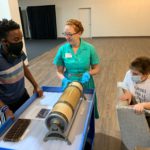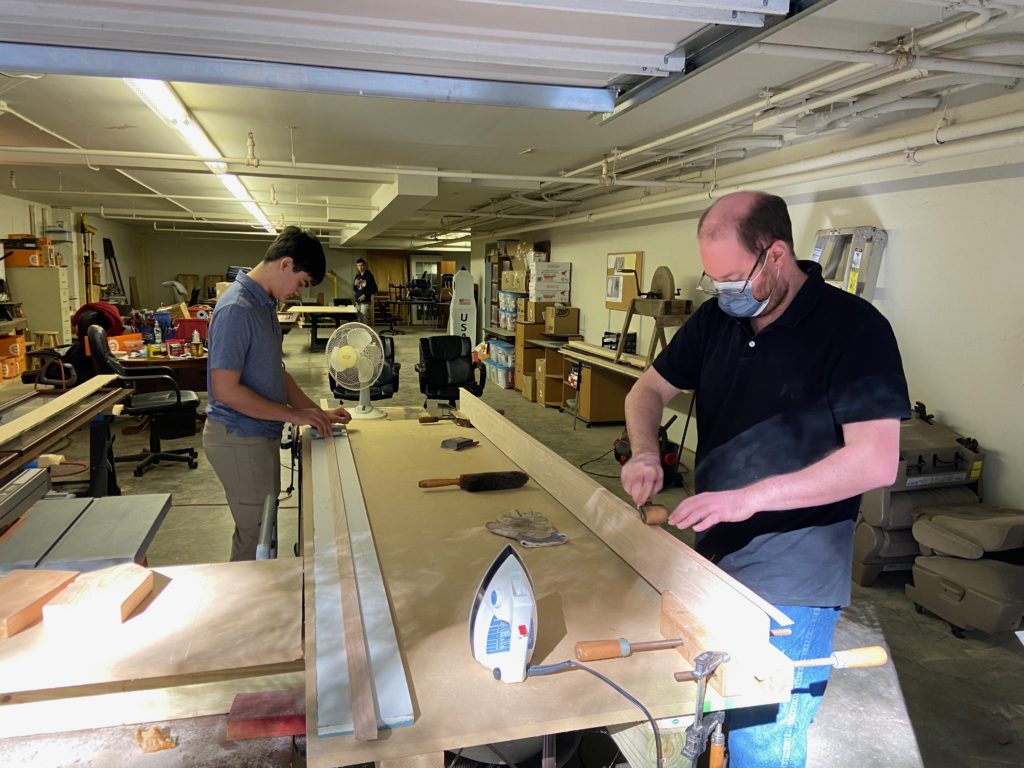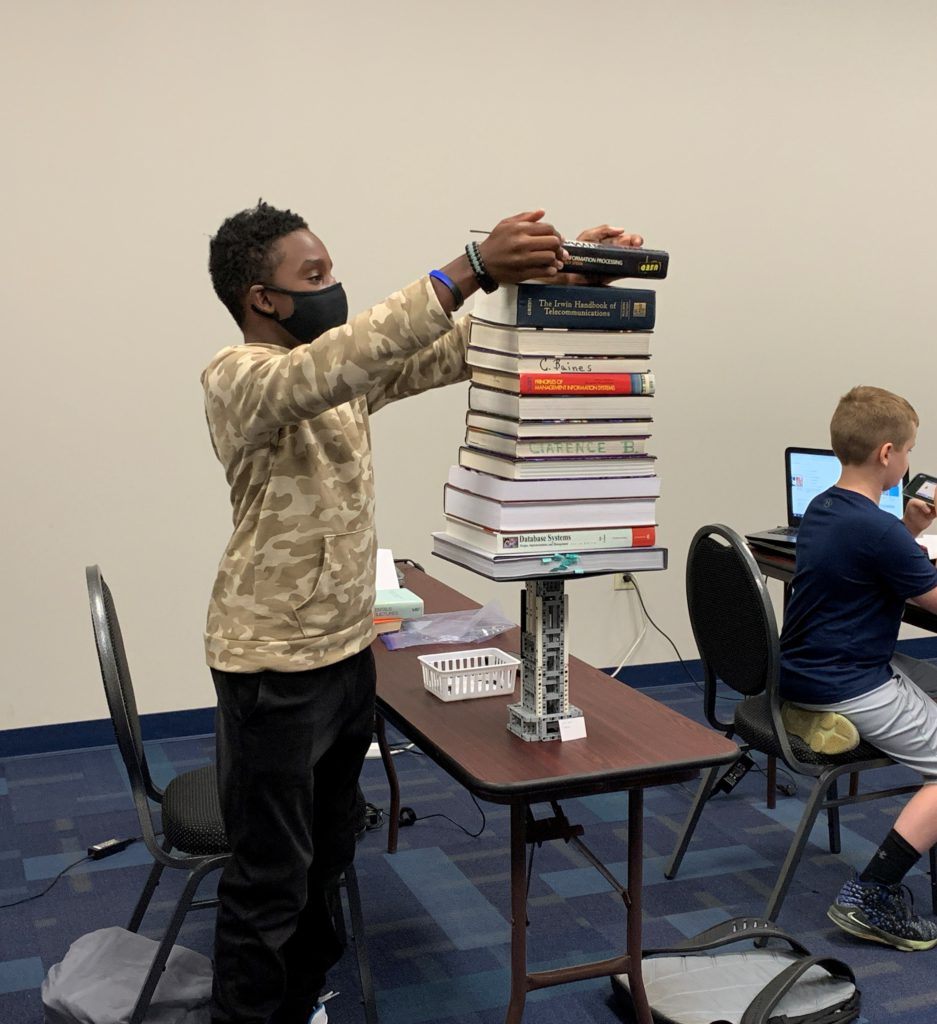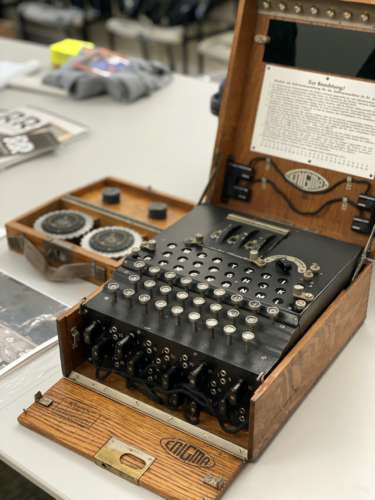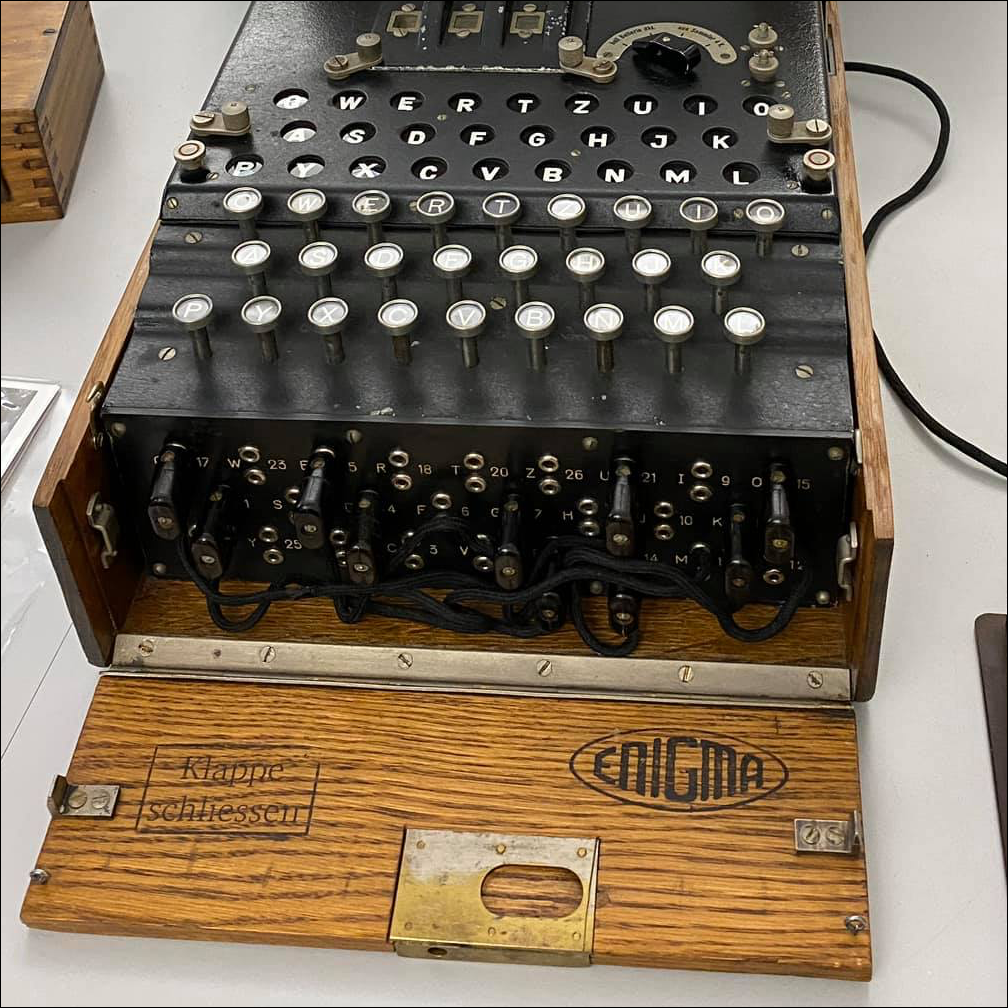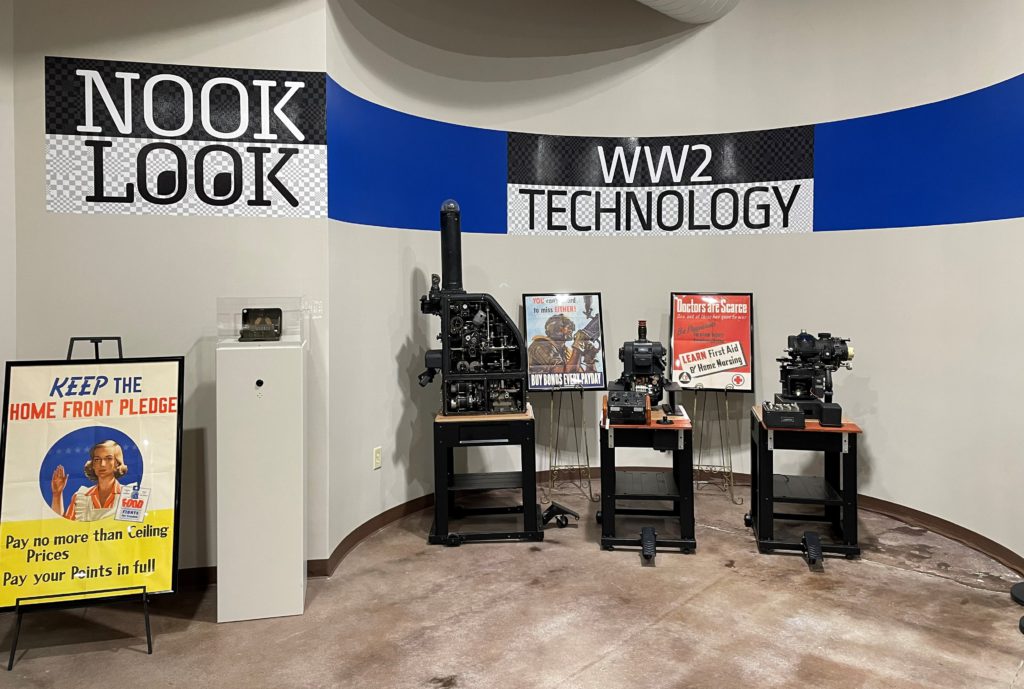
By Micah Walsh
WWII Bombsight Technologies
At the onset of WWII, the need to make use of aircraft in the war effort was clear. Using aircraft to destroy enemy targets from above presented an opportunity to avoid the quagmire of trench warfare still haunting generations from WWI. However, advancements in aircraft technology created a need for precision devices that could accurately hit enemy targets from higher altitudes and at greater speeds than ever before.
Prior to WWII, aircraft were used to bomb enemy targets. The first recorded instance of bombs being dropped onto a city from the air occurred in August 1914, when a German Zeppelin bombed the Belgian city of Liège. During WWI, planes needed to fly at low altitudes to perform bombing runs, which had the adverse effect of putting them in range of anti-aircraft guns on the ground. Additionally, early bombsights were inaccurate. This meant that bombing of enemy territory was more psychological warfare than an effort to destroy specific targets. Ultimately, these factors also meant that civilian casualties were often high.
The need for more accurate bombsights at the outset of WWII was clear. To achieve precision, new bombsights would need to take into account many factors, including speed and altitude of the plane, altitude of the target, air resistance on the bomb, not to mention the pitch and roll of the aircraft which may shift due to circumstances in battle. To meet this need, companies such as Sperry and Norden would create bombsights with many new advancements. These improvements, combined with the autopilot function, would create devices widely used in a variety of aircraft throughout WWII.
The Sperry S-1 bombsight was used by the U.S. 15th Air Force and the British Royal Air Force on B-24 bombers beginning in 1941. The system included the A-5 Automatic Pilot, which allowed the pilot to turn over control of the plane to the bombardier, who operated the Sperry device. The device allowed the bombardier to simultaneously fly the plane while tracking the target through the sight, adjusting the flight path as needed to achieve the target. Once the target was reached and the bombs dropped, the aircraft control was turned back over to the pilot.
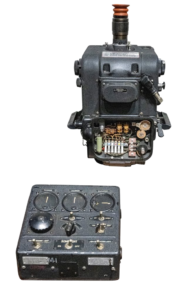
Artifact 1 (Center)
Sperry S-1 Bombsight, A-5 Automatic Pilot
Objects mounted on rolling wood & metal cart.
Artifact Details:
- Bombsight, Type S-1, Part 644830, Ser. AC41-2469, Cont. DA
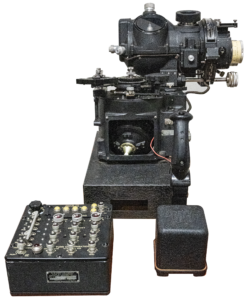
Artifact 2 (Right)
Norden MK. XV Bombsight, Honeywell C-1 Autopilot
Objects mounted on rolling wood & metal cart.
Artifact Details:
- Norden MK. XV Bombsight
- Sperry MARK 1, Mod 7
- Formation Stick, U.S. Army Air Forces, Type C-1 Auto Pilot, MFRS. No. G1080A3CA1, Order No. W33-038AC3624, Minneapolis-Honeywell Reg. Co., Minneapolis, Minnesota
- U.S. Army Air Forces, Type C-1 Autopilot, Autopilot Control Panel
Bombsight, Type S-1, Part 644830, Ser. AC41-2469, Cont. DA
Carl Norden, a former employee of Sperry Gyroscope Co. would design the Norden bombsight in direct competition with his former employer. Norden bombsights were used by the U.S. Army and Navy throughout World War II, often combined with another autopilot system the Honeywell C-1. The C-1 autopilot system was used in aircraft to assist with pilot fatigue on long flights. In combination with Norden bombsights, the C-1 would keep the aircrafts on a straight and steady flight path as the bombardier used the sight to achieve the target. Both a Norden bombsight and the C-1 system were installed in the Enola Gay and Bockscar B-29 bombers that dropped atomic bombs on Japan in 1945.
The Sperry S-1 bombsight was used by the U.S. 15th Air Force and the British Royal Air Force on B-24 bombers beginning in 1941. The system included the A-5 Automatic Pilot, which allowed the pilot to turn over control of the plane to the bombardier, who operated the Sperry device. The device allowed the bombardier to simultaneously fly the plane while tracking the target through the sight, adjusting the flight path as needed to achieve the target. Once the target was reached and the bombs dropped, the aircraft control was turned back over to the pilot.
Not all technology created during WWII was used towards the war effort. Sperry created the P-4 analog computer. Intended to be installed as part of the system for the remote control of bomber gun turrets primarily for the B-29 and B-32 bombers, the contract for its production was ultimately cancelled. Less than 400 of these computers were ever produced, making it one of the rarer pieces of computer and technological history to come out of the war effort.
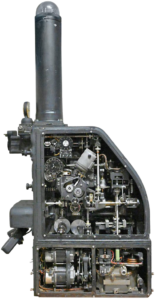
Artifact 3 (left)
Sperry P4 Computer
Object mounted on rolling wood & metal cart.
Artifact Details:
- Sperry Gyroscope Company Inc., Brooklyn, NY., P 4 Computer, Part 647823, Cont. A6-26180, Ser. 386
WWII Communication Technology
Prior to WWII, there were limited means of enciphering confidential information for military communications and many of the previous devices were vulnerable to cryptanalysis (the process of deciphering messages) by enemy forces. It was 1940 when Boris Hagelin, a Swedish businessman, brought his C-38 cipher machine to the U.S. market. The government contracted Hagelin to produce the machine, renamed the M-209, for U.S. military forces use during the war. The M-209 had a few improvements from the original C-38 design, including allowing for the text to be printed automatically.
More than 140,000 M-209s were built for use by the military. Although it was a very secure device with a complex procedure of encoding and decoding messages, Allied messages created on this device were eventually compromised by German codebreakers making the device less secure. As a result, it was mostly used by the U.S. Army for low-level information. However, it was occasionally also used for high-level sensitive information, as was the case when the M-206 was used to relay data on U.S. troop build-up in Britain prior to the Normandy invasion.
Artifact 4 (far left)
M-209 Cipher Machine
Artifact Details:
- Signal Corps, U.S. Army, Converter. Model M-209-A, S/N 133898, Order No. 1499-PHILA-42, Supplied by Hagelin Cryptograph Company, New Milford, Conn.
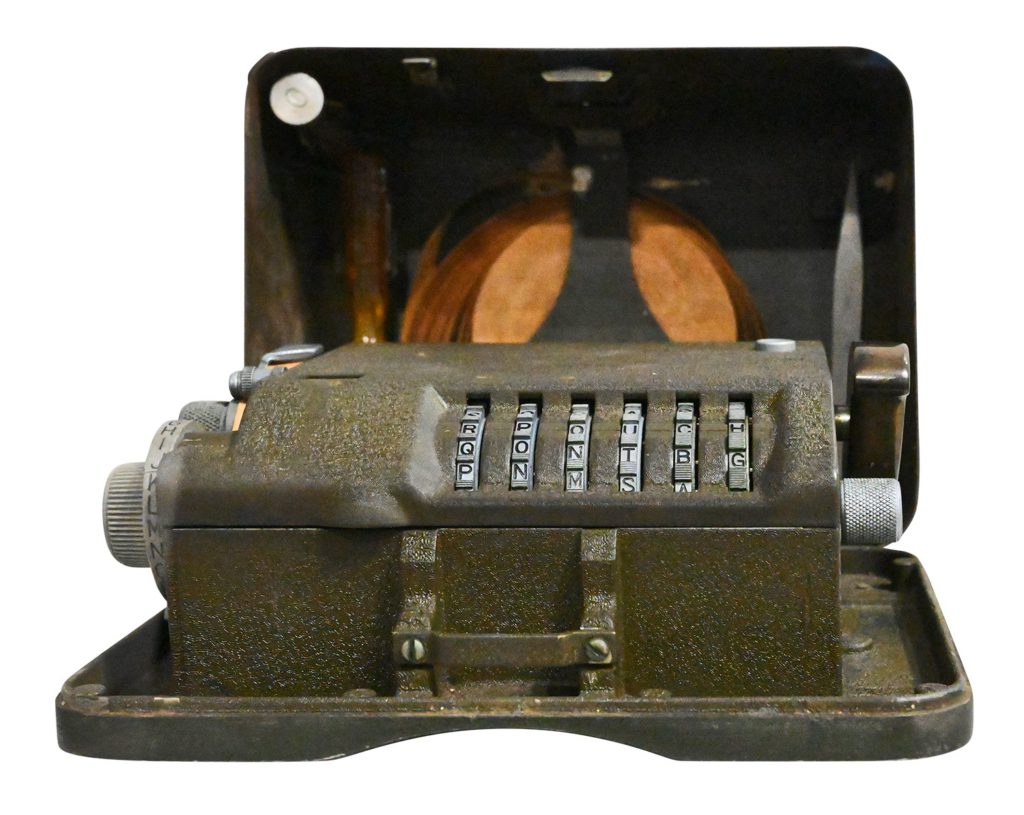
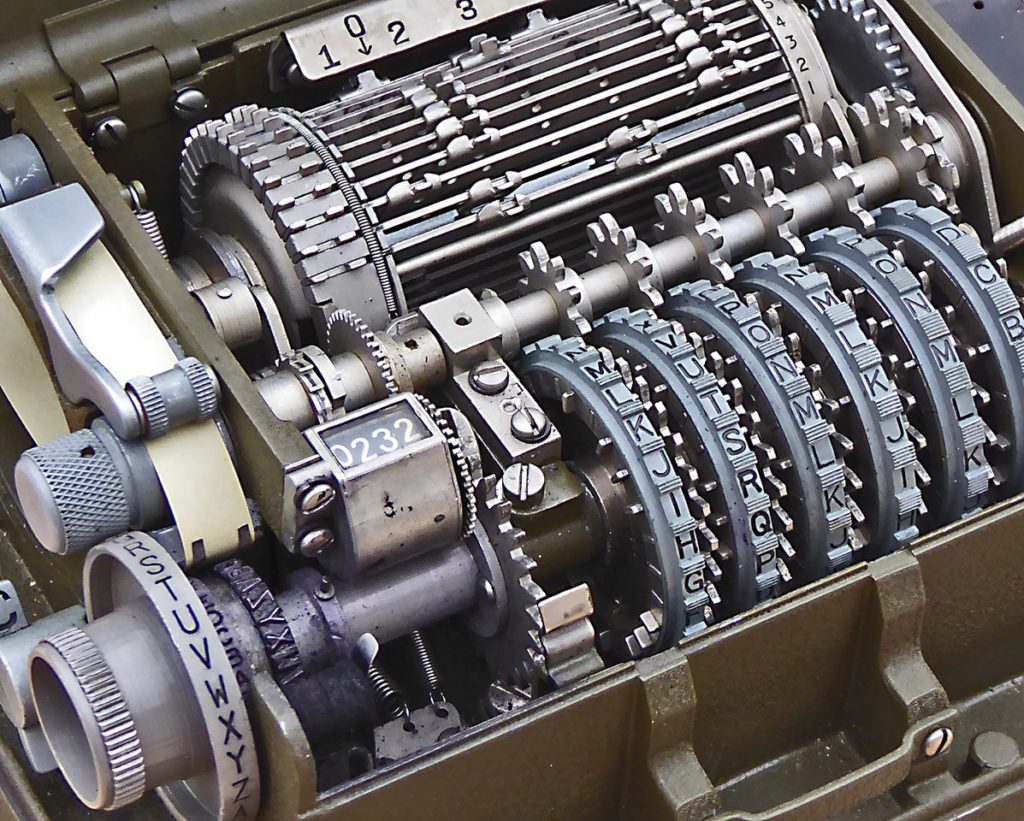
About the Author
Micah Walsh is the Collections Specialist at Computer Museum of America. After six years of teaching history, Micah decided to work on a Certificate of Museum Studies. She graduated from the University of West Georgia in July 2019. After gaining internship experience at the Jimmy Carter Presidential Library and Museum, The Delta Flight Museum, and Zoo Atlanta, Micah joined the Computer Museum of America team in October 2020.
